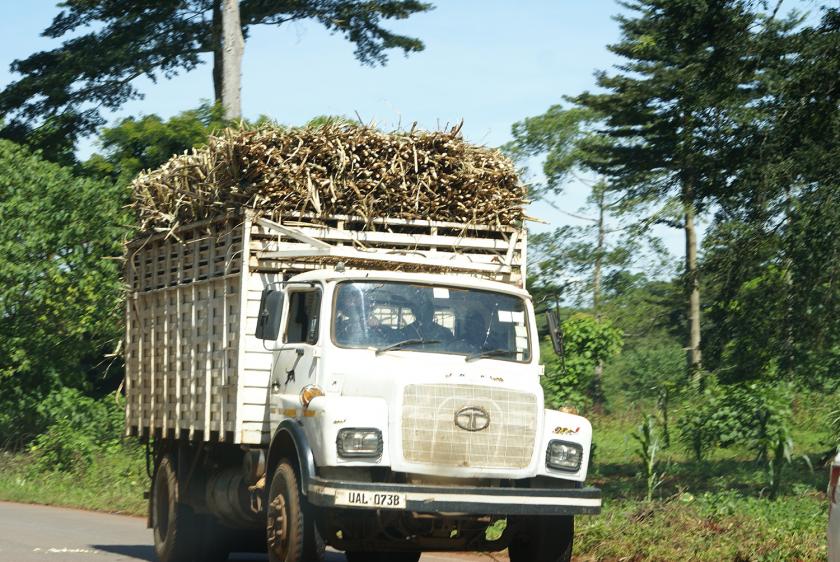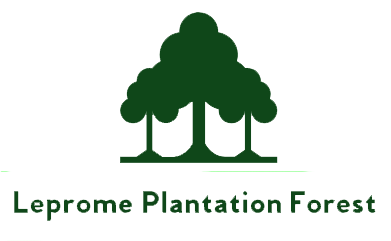
“Forests give us medicine, good air and rainfall, all things that are very important for us. We are helping to conserve the forest by talking to our communities and telling them about the importance of forests and why they should conserve, replant and restore them.” Photo by UN-REDD Programme
Noar Natolo and Scovia Bulyaba are carpet weavers and members of the Nagoje community living in Mabira Forest, in Uganda. To supplement their income, they collect palm leaves from the forest and weave carpets that are later dyed with local natural products.
The forest that supplies these women with palm leaves also provides them with water, medicine and wood for fuel.
“Forests are not just the lungs of the planet,” says Musonda Mumba, Chief of the Terrestrial Ecosystems Unit at the UN Environment Programme. Forests support our overall well-being and are also source of income—we depend on forests and forests depend on us.”
But Mabira Forest is at risk of being wiped out due to an increasing population, high demand for charcoal and agricultural encroachment.
Mabira Forest is one of few remaining tropical rainforests in Uganda covering an area of about 300 square kilometres. One of the country’s biggest reserves, it is home to many endangered species like the primate Lophocebus ugandae, a species of monkey found only in Uganda.
Uganda has experienced severe deforestation over the last decade and has one of the highest rates of deforestation and forest degradation in the world. In 1990, forest cover was estimated at 24 per cent of total land area; by 2015, it was down to 12.4 per cent; today, it is at 9 per cent. Many of the remaining forests are in areas under the protection of the National Forest Authority and the Uganda Wildlife Authority.
Drivers behind deforestation in Uganda include the harvesting of fuelwood, as more than 90 per cent of household energy is derived from firewood and charcoal. Harvesting timber for construction and land conversion for agriculture are also to blame.
In and around Mabira Forest, as in several other parts of the country, access to water is a daily struggle. For Natolo and Bulyaba, working with the National Forest Authority has offered them a chance to participate in the conservation of the forest and access to water.
“We help the National Forest Authority with the conservation of this forest by talking to our communities and telling them about the importance of the forests and why they should not cut it but rather replant and restore it,” says Natolo. “Forests give us medicine, good air and rainfall, all things that are very important for us. In return, the National Forest Authority allows us to collect dry firewood, water and medicinal herbs for domestic use on certain days. Before, the National Forest Authority was like our foe, but now, for the past ten years, we have had a good relationship.”

The NFA has also provided the community with beehives, as well as seedlings for planting. “They have brought us together as a community,” Natolo adds.
Mapping Uganda’s forests: the first step in forest conservation
To help protect and promote forests like Mabira, the Government of Uganda launched its National REDD+ Strategy in November 2017. REDD+ refers to reducing emissions from deforestation and forest degradation in developing countries, through conservation, sustainable management of forests, and enhancement of forest carbon stocks. Uganda’s REDD+ Strategy includes developing plans and options for forest management to reduce carbon emissions and maintain valuable ecosystem services such as biodiversity, water supply, soil protection and wealth creation for sustainable livelihoods. With REDD+, the country has an opportunity to manage its forests in a balanced way for long-term, sustainable economic growth, to support the livelihoods of local, rural and forest dependent communities, and to ensure the conservation of its natural heritage.
Making REDD+ a reality has also required building National Forest Monitoring Systems that can accurately and transparently track forest and land use changes, mitigation actions and facilitate the measurement of results.
The UN-REDD Programme is supporting the Uganda National Forest Authority in establishing an effective forest monitoring system to track and report forest changes and to curb deforestation. Under the initial REDD+ readiness support, national staff were trained in data entry, cleansing and analysis.
Brenda Nagasha, a biomass supervisor with the National Forest Authority measures the height and diameter of trees to update the maps on biomass inventory. “I have been doing this for six years now,” she says. “It’s important to have accurate maps and reports on the status of the forests so that management teams can make wise decisions. For my job, I sometimes camp for thirty days straight in the forest and walk up to 15 kilometres a day. But I love nature and I am happy that through my work I can help protect the environment.”
Mapping teams in Uganda are currently working on land cover for 2017, with an estimated completion date in 2019.
*****
SOURCE; https://www.unenvironment.org/

